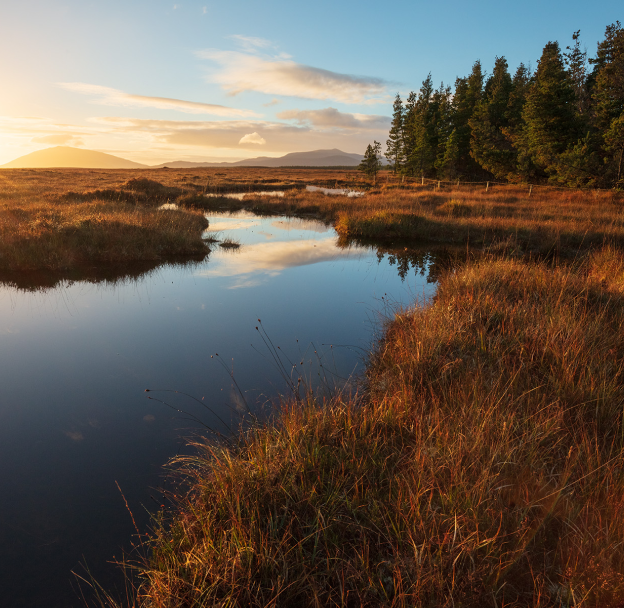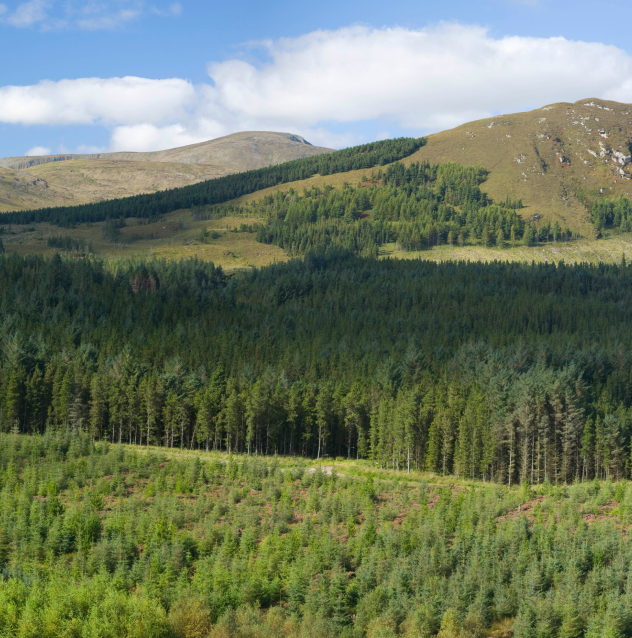
Wild Nephin National Park is Ireland’s sixth National Park and located on the Western seaboard in northwest Mayo. It comprises of 15,000 hectares of Atlantic blanket bog and mountainous terrain, covering a vast uninhabited and unspoilt wilderness dominated by the Nephin Beg mountain range. To the west of the mountains is the Owenduff bog. This is one of the last intact active blanket bog systems in Ireland and Western Europe and is an important scientific and scenic feature of the National Park. Wild Nephin National Park is part of the Natura 2000 Network, which protects rare and important habitats and species under the EU Habitats and Birds Directive. To the east of the mountains is the Nephin Forest, which is currently mainly comprised of Sitka spruce and lodgepole pine, and was originally planted for commercial purposes. This area is now within the National Park and will be managed for biodiversity and recreation.
People have fished and hunted game in the area for a long period. Fishing and hunting lodges, still present outside of the National Park, were bases for these activities. Native red deer, which formerly roamed the Nephin Beg mountains, were one of the species hunted.
Wild Nephin National Park is now home to Ireland’s first International Dark Sky Park, Mayo Dark Sky Park, showcasing some of the darkest, most pristine skies in the world. Nestled between the remote Nephin Mountain Range and the unspoiled Atlantic coastline, the Dark Sky Park extends across an area of 150km2. There’s so much you can discover by looking up at the night skies. On a clear night in the National Park, you can see thousands of twinkling stars, along with other planets in our solar system, The Milky Way and even meteor showers all with the naked eye.
We have committed to keeping the skies above us naturally dark for present and future generations to enjoy these wonders of the night sky.


The Conversion Plan will set out the long-term vision for the Nephin Forest with plans to rewild and restore peatlands, woodlands and riparian habitats within an expansive landscape. Over the past 50 years this area has been dominated by coniferous forests planted for commercial timber production. Our work will create conditions for natural processes to become the dominant driver of change, where biodiversity is enhanced, ecosystems restored and where people can connect with nature in a remote and wild environment.
The Bangor Trail itself has a long history and may date back to the 16th century. Landlords were responsible for the maintenance of the sections of the trail that passed through their land. The trail was used as the main route for people and livestock before the introduction of modern roads between the Bangor Erris region and Newport. Emigrants travelling from Bangor Erris to Westport would have used this trail.